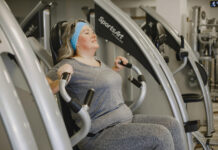Let’s face it—timing is everything. Especially when it comes to eating and working out. If you’ve jumped on the intermittent fasting train, you’ve probably wondered: When should I exercise to get the most out of it? That’s exactly what this guide is here to break down.
Combining intermittent fasting (IF) with the right workout schedule can supercharge fat loss, boost energy, and even improve performance—if done right. But what’s the best time to exercise while fasting? Morning? Evening? Before or after you break your fast? Let’s dive into the science and strategy behind the perfect fasting fitness plan.
Understanding Intermittent Fasting
Popular IF Schedules (16:8, 18:6, OMAD)
Not all fasting schedules are created equal. Here are some common ones:
- 16:8: Fast for 16 hours, eat in an 8-hour window.
- 18:6: A slightly longer fast, shorter eating period.
- OMAD (One Meal A Day): One big meal in a 1-hour window.
Benefits of Intermittent Fasting
Fasting isn’t just about skipping meals. It can:
- Improve insulin sensitivity
- Promote fat loss
- Enhance cellular repair
- Simplify your diet and daily routine
Fasting State vs Fed State
Your body behaves differently depending on whether you’re fasted or fed:
- Fasted state: Low insulin, increased fat oxidation, better for fat burning.
- Fed state: Glucose available, muscle protein synthesis is more efficient.
How Exercise Affects the Fasting Body
Fasted Cardio – Myth or Miracle?
Many swear by fasted cardio for fat loss. The logic? Your body taps into fat stores for fuel. But it’s not a miracle—results depend on intensity, duration, and your overall diet.
Impact on Metabolism and Fat Burn
When training fasted, you may burn more fat during the workout, but total daily fat burn can be similar to fed workouts—unless paired with a solid IF routine.
Hormonal Influence During Fasted Workouts
Fasting boosts growth hormone and norepinephrine, both of which can enhance fat burning and recovery, if you don’t overtrain.
The Importance of Workout Timing
Exercising While Fasted
Pros
- Increases fat oxidation
- Simplifies schedule
- Heightened mental clarity
Cons
- Lower performance on high-intensity days
- Risk of fatigue or dizziness
- Harder recovery if not careful
Exercising After Breaking the Fast
Pros
- More energy from food
- Better performance during strength training
- Enhanced muscle growth potential
Cons
- May disrupt digestion
- Harder to stay consistent if meals vary
Best Time to Exercise While Fasting
Morning Workouts (Pre-Fast)
Great for fasted cardio or light strength training. Just hydrate and maybe sip some black coffee.
Midday Workouts (Before Breaking Fast)
A sweet spot for many. Energy levels are decent, and you can eat shortly after for recovery.
Evening Workouts (After Meal)
Perfect for heavy lifting or HIIT. You’ve got food in your system and plenty of strength.
Creating Your Intermittent Fasting Workout Schedule
Sample Schedules Based on IF Type
16:8 Fasting Workout Plan
- Fast: 8 PM – 12 PM
- Workout: 11:30 AM (fasted) or 1 PM (post-meal)
- Meals: 12 PM, 4 PM, 7:30 PM
OMAD Fasting Fitness Plan
- Fast: 6 PM – 5 PM the next day
- Workout: 4:30 PM (before eating)
- Meal: Big nutrient-dense meal at 5 PM
Tailoring for Goals
- Fat Loss: Fasted training, moderate intensity
- Muscle Gain: Fed training, higher protein intake
- Endurance: Mix of fasted and fed, depending on the session
Nutrition Around Fasting Workouts
Pre-Workout Fuel During IF
If you’re deep into fasting, you can’t eat, but black coffee, green tea, or BCAAs (if you’re okay breaking strict fasts) may help.
Post-Workout Recovery Without Breaking the Fast
It’s tricky. Use electrolytes and lots of water. Some include amino acids; others wait to refeed fully at meal time.
Essential Supplements
- Electrolytes: Prevent cramps and fatigue
- Creatine: Safe during fasting
- Protein: Take post-workout if it aligns with your eating window
Who Should and Shouldn’t Train While Fasting
Beginners vs Advanced Lifters
If you’re new to fasting or fitness, ease into it. Start with walking or yoga, and don’t push fasted HIIT from day one.
Special Populations
- Women: May need shorter fasts or different timing due to hormonal fluctuations.
- Older Adults: Focus on strength and balance, ideally after a light meal.
- Medical Conditions: Always check with a healthcare provider first.
Real-Life Success Stories
Case Study: Fat Loss with Fasted HIIT
Ravi, 35, used 16:8 fasting and morning HIIT to shed 10kg in 3 months. He kept sessions short and focused on hydration.
Case Study: Muscle Gain with Evening Training
Sara, 29, followed OMAD but trained at 6 PM right after her big meal. She gained lean muscle while maintaining low body fat.
Conclusion
So, what’s the best time to exercise while fasting? The truth is—it depends on you. Your goals, your energy, your schedule. But with the right intermittent fasting workout schedule, you can maximize results without burning out.
Start slow. Experiment. Listen to your body. Whether you’re torching fat or building muscle, syncing your fasting and fitness strategy is a total game-changer.
FAQs
1. Is it okay to lift weights while fasting?
Yes, but keep it moderate and ensure post-workout nutrition fits into your eating window.
2. What if I feel dizzy while working out fasted?
Stop, hydrate, and consider adjusting your fasting window or intensity.
3. Can I build muscle while following intermittent fasting?
Absolutely. Prioritize protein and train in your fed state whenever possible.
4. How many days a week should I work out while fasting?
Aim for 3–5 sessions/week, balancing strength, cardio, and recovery.
5. Should I drink coffee before fasted workouts?
Yes! Black coffee can boost energy and fat oxidation during your session.























